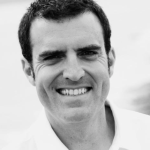
Perspectives
Putting Death in Its Place: Using Ethnography to Redesign Death
Jennifer Collier Jennings



List of suggested readings from Neal Patel Fricke, Tom E. 2003 “Culture and Causality: An Anthropological Comment.” Population and Development Review, 29(3): 470-479. Madsbjerg, Christian and Mikkel B. Rasmussen 2014 “An Anthropologist Walks into a Bar . . .” Harvard Business Review, March. (Available at: http://faculty.elgin.edu/mhealy/HBRAnthropology.pdf) Shea, Jeanne L. 2003 “Setting the Anthropological Record Straight: Critique…
Reply by Melissa Cefkin Manager, Discovery Practices, Accelerated Discovery Lab, IBM Research A great and perennial question that does not lend itself to one answer. The EPIC community is rich and varied in terms of the contexts of their work. In turn, what ‘works’ or is even feasible in these varied contexts varies. This applies…
